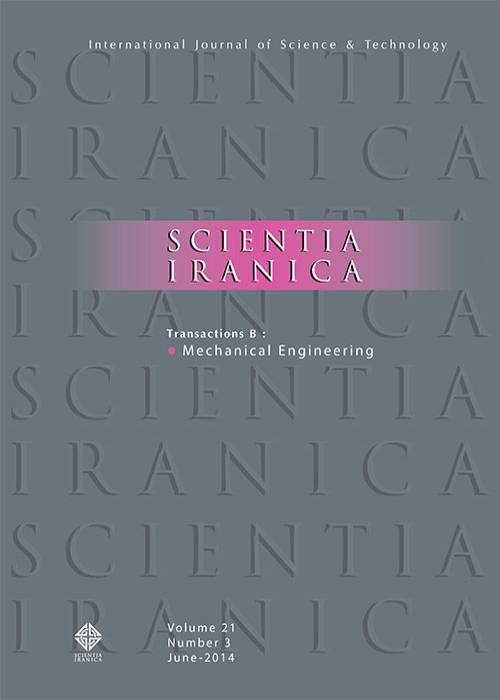فهرست مطالب

Scientia Iranica
Volume:30 Issue: 6, Nov-Dec 2023
- Transactions on Nanotechnology (F)
- تاریخ انتشار: 1402/08/10
- تعداد عناوین: 3
-
-
Pages 2223-2234In the current examination, insightful approximations are researched for magnetohydrodynamics Carreau nanofluid having gyrotactic microorganisms over a warmed turning plate. The plate is moving with the steady uniform rakish speed. Administering conditions are gotten by utilizing certain actual presumptions as incomplete differential conditions with limit conditions. These nonlinear types of conditions are changed into coupled standard differential conditions utilizing bunch likeness change. Optimal homotopy investigation strategy (OHAM) is utilized to acquire the graphical outcomes and even qualities for the stream field factors. Graphical portrayal of speeds, temperature, fixation and thickness of gyrotactic microorganisms are examined and clarified. It is tracked down that dimensionless microorganism’s fixation develops for bioconvective Lewis number and focus distinction variable of microorganisms. It is additionally seen that dimensionless speeds diminish because of the attractive impact and Carreau liquid boundary. Contour plots and mathematical outcomes are given for neighbourhood motion boundaries like skin rubbing coefficient, Nusselt number, Sherwood number and thickness number of motile microorganisms.Keywords: Analytical solution, Magnetohydrodynamics (MHD), Carreau nanofluid, Gyrotactic microorganism, Rotating disk, Contour plot
-
Pages 2235-2244In the current article, MHD flow problem of Darcy-Forchheimer nanoliquid comprising motile microorganisms with viscous dissipation impact past a nonlinear elongated sheet is addressed. The inclusion of gyrotactic microorganisms in nanoliquid assists to boost up the thermal efficiency in numerous micro-biological systems. Iterative solution of the single-phase flow problem is attained by utilizing the procedure of SOR (Successive over Relaxation). The influences of leading parameters on flow velocity, temperature, density and concentration of motile microbes are considered and depicted through tables and graphs by employing software of MATLAB. Furthermore, comparison table is developed to check the accuracy of numerical results of the flow problem under consideration. An increment in the Forchheimer parameter causes reduction in the velocity distribution. It is portrayed that the Lewis number and Brownian motion parameter tend to enhance the rate of mass transport.Keywords: Darcy-Forchheimer, viscous dissipation, Nonlinear Stretching Sheet, Gyrotactic microorganisms
-
Pages 2245-2259The proficiency of hybrid nanoparticles in increasing heat transfer has impressed many researchers to further analyze the working of those fluids. In the current study, the impact of entropy generation on EMHD hybrid nanofluid (copper-alumina) flow over a rotating disk in the presence of the porous medium, Darcy‐Forchheimer, heat generation, viscous dissipation, and thermal radiation. By applying the self-similarity variables, the partial differential equations are converted into ordinary differential equations. After that, the dimensionless equations are numerically solved by using the Runge-Kutta technique, and also the comparison is done between the numerical technique (R-K method) and the homotopy perturbation method (HPM) where HPM yields a more effective and dependable conclusion. To highlight their physical significance, unique characteristic graphs are shown for the profiles of velocity, temperature, and entropy generation, along with a suitable explanation. The hybrid nanofluid velocity decreases with larger values of the magnetic parameter, but the velocity profile increases with the higher electric field. It is observed that both skin friction and nusselt number are increasing function of magnetic parameter and electric field parameter.Keywords: Darcy‐Forchheimer flow, EMHD, Porous, heat generation, viscous dissipation, thermal radiation

